#Logistics Software Application
Explore tagged Tumblr posts
Text
How to Develop a Logistics App: Key Considerations and Best Practices
In today’s fast-paced world, the logistics industry is evolving rapidly, driven by advancements in technology. Developing a Logistics Mobile App is essential for businesses aiming to streamline operations, enhance efficiency, and stay competitive. This guide will walk you through the crucial steps and considerations involved in Logistics App Development.
1. Understanding the Role of Logistics Software
Logistics Software plays a pivotal role in managing the complex web of supply chain activities. It integrates various functions, such as inventory management, order processing, and transportation, into a unified system. By developing a robust Logistics Software Application, businesses can automate processes, reduce errors, and improve overall efficiency.
2. Incorporating RFID Technology
RFID Technology (Radio Frequency Identification) is a game-changer in the logistics sector. It allows for real-time tracking of goods and assets, providing accurate data on inventory levels, shipment status, and location. Integrating RFID into your Logistics Mobile App can significantly enhance visibility and control within your supply chain, leading to better decision-making and resource allocation.
3. Building Smart Warehouses
The concept of Smart Warehouses is gaining traction as businesses look to optimize storage and distribution. A Logistics App that supports smart warehousing can connect with IoT devices, automate inventory management, and enable predictive maintenance. This ensures that warehouses operate efficiently, reducing downtime and operational costs.
4. Designing a Comprehensive Logistic Management System
A Logistic Management System (LMS) is the backbone of any logistics operation. It encompasses various modules, such as fleet management, order tracking, and customer relationship management. When developing a Logistics Software Application, it’s crucial to design an LMS that is scalable, user-friendly, and capable of integrating with other systems to provide a seamless flow of information across the supply chain.
5. Key Features to Include in a Logistics Mobile App
To ensure that your Logistics Mobile App meets the needs of modern businesses, consider incorporating the following features:
Real-time Tracking: Utilize RFID Technology and GPS to provide up-to-the-minute tracking of shipments and assets.
Automated Notifications: Keep users informed with automatic alerts about order status, delivery times, and potential delays.
Integration Capabilities: Ensure your app can integrate with existing Logistics Software and Logistic Management Systems to streamline operations.
Analytics and Reporting: Provide detailed insights and reports on key performance metrics to help businesses make informed decisions.
6. Testing and Deployment
Before launching your Logistics App, rigorous testing is essential. This includes usability testing, performance testing, and security testing to ensure the app is reliable and secure. Once testing is complete, deploy the app in a controlled environment, gather feedback, and make any necessary adjustments.
7. Continuous Improvement and Updates
The logistics industry is constantly evolving, and so should your app. Regular updates, based on user feedback and technological advancements, are crucial for maintaining relevance and ensuring your Logistics Mobile App continues to meet the needs of its users.
Conclusion
Developing a Logistics Mobile App involves a careful blend of technology and strategy. By focusing on RFID Technology, Logistic Management Systems, Smart Warehouses, and other key areas, you can create a powerful tool that enhances efficiency and drives growth in the logistics industry.
Must Read: Understanding how Progressive Web Applications (PWAs) Optimize US Based Logistic and Transportation Companies
#Logistics App Development#Logistics Mobile App#Logistics Industry#Logistics Business#Logistics Sector#Logistics#Logistics Application Development#Logistics Software Application
0 notes
Text
UBITracer Smart Tracking Device: Pinpoint Your Location with Triple Accuracy
1. WiFi Location with UBITracer Tracking Device: Your Urban Navigator 🌆
When surrounded by towering skyscrapers or navigating narrow streets, traditional GPS often struggles. That’s where WiFi location shines.
Benefits: Ultra-precise in urban areas, pinpointing locations with remarkable accuracy.
Use Case: Imagine delivering goods in a crowded city. WiFi location ensures your driver can identify specific buildings or businesses, even in GPS shadow zones.
2. GPS: Precision in Open Spaces 🌄
For wide-open areas like highways, rural roads, or warehouses, GPS is unbeatable.
Accuracy: Within 8 meters, smaller than the size of a standard shipping container!
Use Case: From farm fields to container yards, GPS keeps your operations running smoothly and ensures your assets are always trackable.
3. GSM Location: Always Connected, Even Off the Grid 📶
When WiFi and GPS are unavailable — think mountains, deserts, or dense forests — GSM (cellular signal) steps in as the ultimate fallback.
Reliability: Provides approximate location even in the most remote regions.
Use Case: Ideal for supply chain logistics or emergency response teams operating in challenging environments.
Seamless Switching for Uninterrupted Accuracy 🔄 Hardware
What sets UBITracer apart is its automatic switching capability. The device intelligently chooses the most effective method in real time, ensuring uninterrupted tracking accuracy regardless of your surroundings.
More Than Just Location Tracking Usages
UBITracer isn’t just about knowing where your assets are — it’s about understanding their condition too. Our Multi-Sensor GPS collects and transmits crucial data, including:
Temperature
Humidity
Acceleration
Pressure
Door Openings
This holistic approach empowers supply chain managers to monitor asset health while tracking their location.
Why Businesses Love UBITracer Quality & Security
Our clients use UBITracer to:
Ensure perishable goods stay within safe temperature ranges.
Monitor potential damage during transport through acceleration data.
Verify door openings to prevent theft or tampering.
Explore more real-world use cases at www.ubitracer.com.
Special Offer: Try UBITracer for FREE!
We’re so confident in the value of UBITracer that we’re offering a limited-time free device, along with free cellular data and access to our IoT software platform.
Here’s how to claim:
Purchase a UBITracer Multi-Sensor GPS on Amazon:
Multi-Sensor GPS — Ideal for Valuables ZS-300L
Long-Life Tracker for Temperature Monitoring ZT-28E
Send your Amazon order number and device serial number to [email protected].
Enjoy complimentary cellular data and free platform usage.
For a limited time, receive a full refund through Amazon, making this a risk-free opportunity!
Act Fast — Supplies Are Limited!
Take your IoT journey to the next level with UBITracer. Contact [email protected] today, and let us help you transform how you track and manage your assets.
Stay confident. Stay connected. 🧭
#gps tracker#iotsolutions#logistics#software#gps device#gps and navigation#iot platform#iot development services#innovation#iot applications#iot#technologynews#industrial#tracking#application#apps#supplychainsolutions#supply chain management#supply chain optimization#supplychainlogistics#supplychaininnovation#warehouse#cybersecurity
1 note
·
View note
Text
0 notes
Text
Your all-in-one solution for Parcel and Courier Management applications.
Build your delivery app with real-time tracking & updates. Reduce delivery costs and time by making repeated deliveries along the most efficient routes. Create a delivery app and a complete on-demand delivery management suite.
Through smartphones and online apps, a consumer may request services with ease. Allow your consumers to follow their service in real-time and pay online using a variety of payment channels.
Send real-time SMS alerts to your clients at various stages of the order fulfillment lifecycle to keep them informed. With the delivery agent tracking on live maps allows customers to chat with their assigned agents.
Feel free to reach out for a consultation with Tecnolynx, and we'll be happy to assist with your project needs.
#Parcel management application#Courier management software#Delivery tracking app#Logistics software#Dispatch management#Shipping management#Last-mile delivery#Supply chain management#Logistics tracking#Timely delivery
0 notes
Text
The Future of Fleet Management: Trends and Innovations Shaping the Road
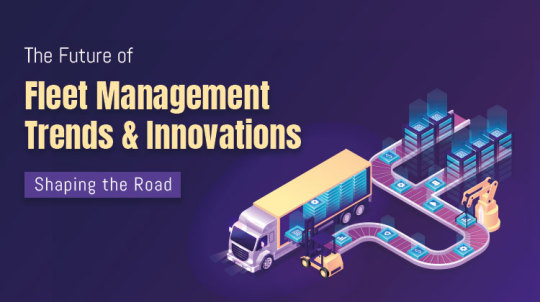
The logistics industry, often referred to as the lifeblood of our global economy, orchestrates the seamless movement of goods across vast distances. From delivering groceries to medical supplies, it ensures that businesses thrive, and societies function smoothly. Yet, at the core of this intricate system lies a critical component: fleet management.
Traditionally, fleet managers relied on clipboards, spreadsheets, and a fair share of guesswork. But today, a seismic shift is underway—a transformation fuelled by cutting-edge technology. Buckle up, because the future of fleet management promises to be a high-speed ride, and its IT professionals, entrepreneurs, and logistics experts who will be at the wheel.
In this blog series, we’ll delve into the dynamic landscape of fleet management, exploring trends, innovations, and strategies that drive efficiency, safety, and sustainability. From optimizing routes to embracing electric vehicles, we’ll navigate the twists and turns of this industry’s evolution.
The Power of Data: Fleet Management Systems Take Centre Stage
Fleet management systems (FMS) have become the undisputed champions, offering a centralized platform to track vehicles, optimize routes, and analyse driver behaviour. These robust software solutions leverage real-time data, providing a bird’s-eye view of your entire fleet operation. Imagine being able to pinpoint the location of every vehicle, monitor fuel efficiency, and identify potential maintenance issues – all from a single, user-friendly interface.
Telematics: The Language of Connected Fleets
The magic behind the FMS curtain lies in telematics – the technology that collects and transmits data from your vehicles. Think GPS tracking on steroids. Telematics systems gather a wealth of information, including:
Vehicle location and status: Know exactly where each vehicle is, whether it’s idling, moving, or parked.
Driver behaviour: Monitor speed, braking patterns, and harsh acceleration to identify areas for improvement and promote safety.
Fuel consumption: Gain valuable insights into fuel efficiency and identify opportunities to optimize routes and reduce costs.
Engine diagnostics: Get real-time alerts on potential mechanical issues, allowing for preventive maintenance and avoiding costly breakdowns.
By harnessing the power of telematics, FMS empowers fleet managers to make data-driven decisions that enhance efficiency, improve safety, and ultimately, boost the bottom line.
The Rise of the Machines: AI and Machine Learning
Get ready to be amazed by the next wave of innovation: Artificial Intelligence (AI) and Machine Learning (ML) are poised to revolutionize the way fleets operate. Here’s a glimpse into what the future holds:
Predictive maintenance: Imagine a world where your vehicles can predict their own maintenance needs! AI algorithms will analyse data to anticipate potential problems before they occur, preventing costly breakdowns and ensuring peak performance.
Advanced route optimization: ML will take route planning to a whole new level. By factoring in real-time traffic data, weather conditions, and historical patterns, AI can create the most efficient and time-saving routes possible, reducing fuel consumption and delivery times.
Driver coaching: AI can analyse driver behaviour patterns and provide personalized feedback, promoting safe driving habits and minimizing risks.
The integration of AI and ML into fleet management systems will lead to a future where fleets operate with unprecedented levels of efficiency and intelligence.
Electric Vehicles and Sustainable Logistics
Sustainability is no longer a buzzword; it’s a driving force in the logistics industry. The rise of electric vehicles (EVs) presents a game-changing opportunity for fleets to reduce their environmental footprint. Imagine a fleet of silent, zero-emission delivery trucks gliding through city streets – that’s the future we’re building towards.
However, Fleet management systems will need to evolve to accommodate charging infrastructure, monitor battery health, and optimize routes for maximum range. This presents exciting opportunities for IT professionals and logistics application developers to create the next generation of fleet management solutions that are both efficient and environmentally friendly.
The Human Touch: Collaboration is Key
While technology plays a critical role, it’s important to remember that the human element remains vital in fleet management. The best fleet management systems empower drivers and fleet managers to work together seamlessly.
Imagine a future where drivers receive real-time updates on traffic conditions and optimized routes, allowing them to deliver goods safely and efficiently. Additionally, fleet managers can leverage data from the FMS to provide targeted coaching and feedback to drivers, fostering a collaborative environment that prioritizes safety and performance.
The Road Ahead: A Connected, Efficient, and Sustainable Future
The future of fleet management is a connected one. Vehicles, drivers, and fleet managers will be seamlessly integrated through a network of data and intelligent systems. This interconnected ecosystem will lead to:
Increased efficiency: Optimized routes, proactive maintenance, and improved fuel management will lead to significant cost reductions and streamlined operations.
Enhanced safety: Real-time driver monitoring, and personalized coaching will create a culture of safety on the road, reducing accidents and protecting lives.
Sustainability: The integration of EVs and eco-friendly practices will minimize environmental impact, creating a cleaner and greener future.
The future of fleet management is on the horizon, a landscape shaped by data, AI, and sustainable practices. As we embrace automation and data-driven insights, The road ahead demands not just technological advancements, but also a commitment to responsible innovation that prioritizes both efficiency and the well-being of drivers and the environment.
Let’s keep the conversation going. Share your thoughts on the future of fleet management in the comments below!
________________________________
Why is fleet management important?
It helps reduce costs, improve safety, enhance productivity, and ensure regulatory compliance.
How is technology changing fleet management?
Technology improves data collection, real-time monitoring, and predictive analytics, enhancing decision-making and efficiency.
Why are electric vehicles (EVs) important for fleet management?
EVs reduce emissions, lower fuel costs, and offer long-term savings and sustainability benefits.
How does predictive maintenance benefit fleet management?
It reduces downtime, lowers maintenance costs, and extends vehicle lifespan.
What role does AI play in fleet management?
AI enhances route optimization, predictive maintenance, driver safety, and overall fleet efficiency.
What is the future of fleet management?
The future includes more automation, increased use of AI, greater sustainability efforts, and improved data integration.
________________________________
Please Checkout the blog post: https://shorturl.at/qW8MI
#fleet management#fleet management systems#logistics application developers#fleet management solutions#fleet management software
0 notes
Text
GPS Vehicle Tracking System
A GPS vehicle tracking system keeps your fleet on schedule and helps your drivers choose quicker routes and avoid costly delays.
Industry: Logistics and Transportation
Technology stack: Node.js, MySQL, Javascript, Express.js, React Native, Yandex.kit
#outsourcing#software development#web development#staff augmentation#custom software development#it staff augmentation#custom software solutions#it staffing company#it staff offshoring#custom software#custom software application#mobiledevelopment#mobile application development#gpstrackingsoftware#gps fleet management#gps#logistics#fleet management#node.js#nodejs#node#javascript#react native
0 notes
Text
Why Mask Bans Fail Jews and Other Marginalized Groups - Published June 28, 2024
The #UnmaskHateNY campaign, launched to address rising antisemitism, proposes banning masks for Jewish safety but leaves disabled Jews and other marginalized communities behind. This initiative could have severe public health repercussions and stigmatize vulnerable groups.
Challenges of Enforcing Health Exemptions Health exemptions for mask bans are impractical and unfair to enforce. Determining eligibility would burden individuals and law enforcement, especially since many health conditions requiring masks can be invisible- At least 10% of Americans have invisible disabilities. Some individuals wear masks to protect their health or the health of family members, even if they do not have any documented health risks themselves.
Requiring disclosure of private medical information infringes on privacy rights and can lead to discrimination. The logistical challenges of verifying exemptions would result in inconsistent application and abuse, creating a civil rights and public health crisis.
Stigmatizing Masks Leads to Harassment Masks are crucial for safeguarding public health. Associating mask-wearing with anti-hate efforts undermines public safety and discriminates against health-conscious individuals.
Misguided Comparisons The campaign draws parallels to historical instances of masked intimidation, such as those by the Ku Klux Klan. However, this comparison is misguided. Today, most people wear masks to protect their health and the health of others, not to intimidate. This conflation unfairly penalizes those who mask for safety and contributes to a climate of fear and discrimination. There is no substantial evidence that banning masks will deter crime or improve public safety. Data shows that crime rates decreased despite increased masked use. Studies have shown that face masks are less effective than sunglasses in hiding identity and do not deter facial recognition software.
Increased Danger for Mask-Wearers Mask bans can often lead to increased harassment and discrimination against those who wear masks, including Jewish individuals.
After North Carolina’s legislation was introduced in May 2024, mask-wearers have experienced harassment and assault, even before it was made into law.
New Yorkers have already been subject to physical attacks due to mask usage.
A man in New Jersey was left permanently blind after being attacked for wearing a mask in September 2023.
Read the rest at either link!
#covid#mask up#pandemic#covid 19#wear a mask#coronavirus#sars cov 2#still coviding#public health#wear a respirator
12 notes
·
View notes
Text
Thailand Board of Investment
The Thailand Board of Investment (BOI) is a pivotal government agency tasked with promoting investment in Thailand, both from domestic and foreign sources. Established in 1966, the BOI plays a crucial role in driving economic growth, fostering innovation, and enhancing Thailand's competitiveness in the global market. By offering a range of incentives, streamlined services, and strategic support, the BOI attracts high-value investments across various sectors. This article provides an in-depth exploration of the BOI, covering its legal framework, incentive schemes, application process, and strategic considerations for investors.
Legal Framework and Mission of the BOI
The BOI operates under the Investment Promotion Act B.E. 2520 (1977), which grants it the authority to provide incentives and support to qualified investments. The BOI's mission is to:
Promote Investment: Attract domestic and foreign investment in targeted industries and regions.
Enhance Competitiveness: Strengthen Thailand's position as a regional hub for trade and investment.
Foster Innovation: Support research and development (R&D), technology transfer, and sustainable practices.
Facilitate Business: Streamline regulatory processes and provide comprehensive support services to investors.
The BOI is governed by a board chaired by the Prime Minister, with members from key ministries and private sector representatives, ensuring a balanced approach to investment promotion.
Key Incentives Offered by the BOI
The BOI offers a range of incentives to attract and support investments in targeted industries. These incentives are designed to reduce costs, enhance competitiveness, and facilitate business operations. Key incentives include:
1. Tax Incentives
Corporate Income Tax (CIT) Exemptions: Projects may receive CIT exemptions for up to 8 years, with possible extensions for projects in advanced technology or R&D.
Import Duty Exemptions: Exemptions on import duties for machinery, raw materials, and components used in production.
Dividend Tax Exemptions: Dividends paid from exempted profits are also exempt from taxation.
2. Non-Tax Incentives
Land Ownership: Foreign investors may own land for promoted projects, subject to BOI approval.
Work Permits and Visas: Simplified procedures for obtaining work permits and visas for foreign executives, experts, and technicians.
Repatriation of Funds: Permission to repatriate investment capital, profits, and dividends.
3. Sector-Specific Incentives
Targeted Industries: Enhanced incentives for industries such as biotechnology, digital technology, renewable energy, and advanced manufacturing.
Special Economic Zones (SEZs): Additional incentives for investments in SEZs, including infrastructure support and reduced regulatory requirements.
4. Additional Benefits
Investment Promotion Zones: Incentives for investments in designated zones, such as the Eastern Economic Corridor (EEC).
Green Initiatives: Additional benefits for projects that promote environmental sustainability and energy efficiency.
Targeted Industries and Strategic Sectors
The BOI focuses on promoting investments in industries that align with Thailand's economic development goals. Key targeted industries include:
Advanced Technology and Innovation:
Biotechnology, nanotechnology, and advanced materials.
Digital technology, including software development, data centers, and cybersecurity.
Sustainable Industries:
Renewable energy, such as solar, wind, and biomass.
Environmental management and waste-to-energy projects.
High-Value Manufacturing:
Automotive and aerospace industries.
Electronics and electrical appliances.
Services and Infrastructure:
Tourism and hospitality, including medical tourism.
Logistics and transportation, particularly in the EEC.
Agriculture and Food Processing:
High-tech agriculture and food innovation.
Halal food production and export.
Application Process for BOI Promotion
The process of applying for BOI promotion involves several steps, each requiring careful preparation and adherence to regulatory requirements. Below is a detailed breakdown:
1. Determine Eligibility
Identify the appropriate BOI category and incentives based on your business activities and investment plans.
Ensure that your project aligns with the BOI's targeted industries and strategic goals.
2. Prepare Required Documents
Business Plan: Detailed plan outlining the project's objectives, scope, and financial projections.
Financial Statements: Audited financial statements for existing companies or pro forma financials for new ventures.
Technical Specifications: Details of machinery, technology, and production processes.
Environmental Impact Assessment (EIA): For projects with potential environmental impacts.
3. Submit the Application
Submit the application through the BOI's online portal or at a BOI office.
Pay the application fee, which varies depending on the project size and complexity.
4. Review and Approval
The BOI reviews the application, including the project's feasibility, economic impact, and compliance with regulations.
Additional information or clarifications may be requested during the review process.
5. Receive BOI Promotion Certificate
If approved, the BOI issues a Promotion Certificate, detailing the incentives and conditions.
The certificate must be registered with the relevant government agencies to activate the incentives.
6. Compliance and Reporting
BOI-promoted projects are subject to periodic reporting and compliance checks.
Ensure that all conditions and requirements are met to maintain the incentives.
Strategic Considerations for Investors
To maximize the benefits of BOI promotion, investors should consider the following strategies:
Sector Alignment:
Align your investment with the BOI's targeted industries and strategic goals.
Research the specific incentives and requirements for your sector.
Comprehensive Planning:
Develop a detailed business plan that outlines the project's objectives, scope, and financial projections.
Consider the long-term impact of the investment and potential for expansion.
Legal and Regulatory Compliance:
Ensure compliance with Thai laws and regulations, including environmental and labor standards.
Seek legal advice to navigate the complexities of BOI promotion and regulatory requirements.
Partnerships and Collaboration:
Form strategic partnerships with local businesses, research institutions, and government agencies.
Leverage local expertise and networks to enhance the project's success.
Sustainability and Innovation:
Incorporate sustainable practices and innovative technologies into the project.
Explore opportunities for R&D and technology transfer to enhance competitiveness.
Recent Developments and Trends
Thailand's investment landscape is evolving, with several trends and developments shaping the BOI's strategies:
Eastern Economic Corridor (EEC):
The EEC is a flagship initiative to develop the eastern region into a hub for advanced industries and innovation.
The BOI offers enhanced incentives for investments in the EEC, including infrastructure support and streamlined regulations.
Digital Transformation:
The BOI is promoting investments in digital technology, including artificial intelligence, blockchain, and fintech.
Digital infrastructure projects, such as data centers and smart cities, are prioritized.
Sustainability and Green Initiatives:
There is growing emphasis on sustainable investments, including renewable energy, waste management, and green manufacturing.
The BOI offers additional incentives for projects that promote environmental sustainability.
Post-Pandemic Recovery:
The BOI is implementing measures to support economic recovery, including incentives for healthcare, biotechnology, and supply chain resilience.
Efforts to attract foreign investment and boost domestic industries are intensified.
Conclusion
The Thailand Board of Investment (BOI) is a vital institution for promoting investment and driving economic growth in Thailand. By offering a range of incentives, streamlined services, and strategic support, the BOI attracts high-value investments across various sectors. Understanding the BOI's legal framework, incentive schemes, and application process is essential for investors seeking to capitalize on the opportunities in Thailand. As the country continues to evolve its investment landscape, staying informed and proactive will remain key to achieving long-term success. Whether you are a domestic entrepreneur or a foreign investor, the BOI provides a robust platform for realizing your investment goals and contributing to Thailand's economic development.
#thailand#thai#corporate#thailandboardofinvestment#thailandboi#thaiboi#boi#boardofinvestment#corporateinthailand#businessinthailand#business
4 notes
·
View notes
Text
Future of ERP Software in India – Trends to Watch in 2025
As we approach the midpoint of this transformative decade, businesses across India are more reliant than ever on advanced technological solutions to stay competitive and agile. Among these, Enterprise Resource Planning (ERP) software continues to evolve rapidly, becoming an indispensable tool for enterprises aiming to streamline operations, enhance efficiency, and drive strategic growth. At Nivida Software, recognised among the Best ERP software providers in Vadodara and widely trusted as one of the Best ERP software providers in Gujarat, we consistently strive to keep ahead of industry shifts and emerging technologies. Today, we're exploring the pivotal trends set to shape the future of ERP software in India in 2025.

1. AI-Powered Predictive Analytics:
Artificial intelligence is no longer merely a concept from the distant future; rather, it is increasingly becoming the foundation of enterprise resource planning software. As of the year 2025, predictive analytics that is powered by artificial intelligence will have become the norm, making it possible for Indian enterprises to foresee market swings, consumer behaviour, and internal operational disturbances in advance. With the use of powerful predictive analytics, enterprise resource planning (ERP) systems will enable businesses to make decisions in real-time that are well-informed, thereby minimising risks and increasing profits.
2. Increased Cloud Adoption:
Cloud technology, already integral to ERP solutions, will witness unprecedented adoption rates. The ease of deployment, scalability, and cost-effectiveness of cloud-based ERP software makes it highly attractive, especially for SMEs in India. As one of the Best ERP software providers in India, Nivida Software anticipates that by 2025, the majority of Indian enterprises, regardless of size, will leverage cloud ERP solutions to stay agile, innovative, and resilient.
3. Customisation and Personalisation:
One-size-fits-all solutions are quickly becoming outmoded, and customisation and personalisation are becoming increasingly important. By the year 2025, enterprise resource planning (ERP) systems will primarily lean towards customised customisation, which will provide features and functionalities that are suited to the specific requirements of each company. The implementation of this change will result in increased flexibility, which will enable businesses in Vadodara, Gujarat, and throughout India to make the most of their ERP investments in terms of both efficacy and applicability.
4. Enhanced Mobile Accessibility:
Given that India is expected to have more than 900 million mobile users by the year 2025, enterprise resource planning software needs to become mobile-friendly in a smooth manner. Increasingly, enterprise resource planning (ERP) suppliers will emphasize mobile-first designs, which will enable employees to access essential data and capabilities from any location and at any time. Because of this accessibility, productivity and response time will be significantly improved, both of which are crucial characteristics in the fast-paced business scene of today.
5. Integration with IoT:
The Internet of Things (IoT) will have a significant influence on the future of enterprise resource planning (ERP) systems in India. With the help of Internet of Things integration, organisations can collect data in real-time from a wide variety of devices and gear, and then feed that data directly into ERP platforms for immediate analysis and action. This trend is going to transform industries such as agriculture, manufacturing, and logistics by making operations more transparent, efficient, and responsive. For example, manufacturing will be revolutionised.
6. Blockchain-Enabled ERP Systems:
Security, transparency, and traceability are increasingly vital in an interconnected business environment. Blockchain integration in ERP software will play a significant role in addressing these needs. By 2025, we expect blockchain to become a central component within ERP solutions, offering enhanced data security, fraud prevention, and improved transparency across supply chains, particularly in sectors such as pharmaceuticals, finance, and agriculture.
7. Sustainability and Environmental Compliance:
Environmental sustainability and regulatory compliance are becoming non-negotiable priorities globally, and India is no exception. Future ERP systems will actively support businesses in tracking, managing, and reporting their environmental footprints and compliance requirements. ERP solutions will thus become crucial tools for enterprises to stay compliant, reduce environmental impact, and maintain market reputation.
8. Advanced User Experience (UX):
Gone are the days when ERP systems were complicated and cumbersome. In the coming years, user experience will be front and centre. ERP solutions will incorporate intuitive interfaces, simplified navigation, and engaging visual dashboards, making complex data accessible and actionable even for non-technical employees. At Nivida Software, we are already pioneering such advancements, reinforcing our position as one of the Best ERP software providers in Gujarat.
9. Real-time Data Processing and Reporting:
By 2025, ERP software will fully transition into real-time data processing systems. Businesses will no longer rely on batch processing or delayed reports. Real-time analytics and instantaneous reporting capabilities will become standard, allowing enterprises to react swiftly to changing market dynamics, operational issues, and emerging opportunities.
10. Increasing Focus on Data Privacy and Security:
With data becoming an invaluable asset, concerns regarding its privacy and security continue to rise. Future ERP systems will incorporate advanced cybersecurity measures and rigorous data protection protocols. Providers who prioritise security and privacy will lead the industry, building trust among their clientele.
Closing Thoughts:
The future of ERP software in India is bright, with advancements promising unprecedented opportunities for growth, innovation, and efficiency. By embracing AI, cloud technology, customisation, mobile accessibility, IoT, blockchain, sustainability measures, enhanced UX, real-time processing, and stringent data security, businesses across Vadodara, Gujarat, and India will unlock new potential for success.
At Nivida Software, recognised consistently as one of the Best ERP software providers in India, we’re committed to helping enterprises navigate these exciting transformations. By continually evolving our offerings, staying ahead of trends, and addressing emerging business challenges, we strive to empower our clients with cutting-edge ERP solutions. The future is here, and it’s smart, secure, and sustainable. Welcome to the ERP landscape of 2025.
3 notes
·
View notes
Text
Top 10 Emerging Tech Trends to Watch in 2025
Technology is evolving at an unprecedented tempo, shaping industries, economies, and day by day lifestyles. As we method 2025, several contemporary technology are set to redefine how we engage with the sector. From synthetic intelligence to quantum computing, here are the important thing emerging tech developments to look at in 2025.

Top 10 Emerging Tech Trends In 2025
1. Artificial Intelligence (AI) Evolution
AI remains a dominant force in technological advancement. By 2025, we will see AI turning into greater sophisticated and deeply incorporated into corporations and personal programs. Key tendencies include:
Generative AI: AI fashions like ChatGPT and DALL·E will strengthen similarly, generating more human-like textual content, images, and even films.
AI-Powered Automation: Companies will more and more depend upon AI-pushed automation for customer support, content material advent, and even software development.
Explainable AI (XAI): Transparency in AI decision-making becomes a priority, ensuring AI is greater trustworthy and comprehensible.
AI in Healthcare: From diagnosing sicknesses to robot surgeries, AI will revolutionize healthcare, reducing errors and improving affected person results.
2. Quantum Computing Breakthroughs
Quantum computing is transitioning from theoretical studies to real-global packages. In 2025, we will expect:
More powerful quantum processors: Companies like Google, IBM, and startups like IonQ are making full-size strides in quantum hardware.
Quantum AI: Combining quantum computing with AI will enhance machine studying fashions, making them exponentially quicker.
Commercial Quantum Applications: Industries like logistics, prescribed drugs, and cryptography will begin leveraging quantum computing for fixing complex troubles that traditional computer systems can not manage successfully.
3. The Rise of Web3 and Decentralization
The evolution of the net continues with Web3, emphasizing decentralization, blockchain, and user possession. Key factors consist of:
Decentralized Finance (DeFi): More economic services will shift to decentralized platforms, putting off intermediaries.
Non-Fungible Tokens (NFTs) Beyond Art: NFTs will find utility in actual estate, gaming, and highbrow belongings.
Decentralized Autonomous Organizations (DAOs): These blockchain-powered organizations will revolutionize governance systems, making choice-making more obvious and democratic.
Metaverse Integration: Web3 will further integrate with the metaverse, allowing secure and decentralized digital environments.
4. Extended Reality (XR) and the Metaverse
Virtual Reality (VR), Augmented Reality (AR), and Mixed Reality (MR) will retain to improve, making the metaverse extra immersive. Key tendencies consist of:
Lighter, More Affordable AR/VR Devices: Companies like Apple, Meta, and Microsoft are working on more accessible and cushty wearable generation.
Enterprise Use Cases: Businesses will use AR/VR for far flung paintings, education, and collaboration, lowering the want for physical office spaces.
Metaverse Economy Growth: Digital belongings, digital real estate, and immersive studies will gain traction, driven via blockchain technology.
AI-Generated Virtual Worlds: AI will play a role in developing dynamic, interactive, and ever-evolving virtual landscapes.
5. Sustainable and Green Technology
With growing concerns over weather alternate, generation will play a vital function in sustainability. Some key innovations include:
Carbon Capture and Storage (CCS): New techniques will emerge to seize and keep carbon emissions efficaciously.
Smart Grids and Renewable Energy Integration: AI-powered clever grids will optimize power distribution and consumption.
Electric Vehicle (EV) Advancements: Battery generation upgrades will cause longer-lasting, faster-charging EVs.
Biodegradable Electronics: The upward thrust of green digital additives will assist lessen e-waste.
6. Biotechnology and Personalized Medicine
Healthcare is present process a metamorphosis with biotech improvements. By 2025, we expect:
Gene Editing and CRISPR Advances: Breakthroughs in gene modifying will enable treatments for genetic disorders.
Personalized Medicine: AI and big statistics will tailor remedies based on man or woman genetic profiles.
Lab-Grown Organs and Tissues: Scientists will make in addition progress in 3D-published organs and tissue engineering.
Wearable Health Monitors: More superior wearables will music fitness metrics in actual-time, presenting early warnings for illnesses.
7. Edge Computing and 5G Expansion
The developing call for for real-time statistics processing will push aspect computing to the vanguard. In 2025, we will see:
Faster 5G Networks: Global 5G insurance will increase, enabling excessive-velocity, low-latency verbal exchange.
Edge AI Processing: AI algorithms will system information in the direction of the source, reducing the want for centralized cloud computing.
Industrial IoT (IIoT) Growth: Factories, deliver chains, and logistics will advantage from real-time facts analytics and automation.
Eight. Cybersecurity and Privacy Enhancements
With the upward thrust of AI, quantum computing, and Web3, cybersecurity will become even more essential. Expect:
AI-Driven Cybersecurity: AI will come across and prevent cyber threats extra effectively than traditional methods.
Zero Trust Security Models: Organizations will undertake stricter get right of entry to controls, assuming no entity is inherently sincere.
Quantum-Resistant Cryptography: As quantum computer systems turn out to be greater effective, encryption techniques will evolve to counter potential threats.
Biometric Authentication: More structures will rely on facial reputation, retina scans, and behavioral biometrics.
9. Robotics and Automation
Automation will hold to disrupt numerous industries. By 2025, key trends encompass:
Humanoid Robots: Companies like Tesla and Boston Dynamics are growing robots for commercial and family use.
AI-Powered Supply Chains: Robotics will streamline logistics and warehouse operations.
Autonomous Vehicles: Self-using automobiles, trucks, and drones will become greater not unusual in transportation and shipping offerings.
10. Space Exploration and Commercialization
Space era is advancing swiftly, with governments and private groups pushing the boundaries. Trends in 2025 include:
Lunar and Mars Missions: NASA, SpaceX, and other groups will development of their missions to establish lunar bases.
Space Tourism: Companies like Blue Origin and Virgin Galactic will make industrial area travel more reachable.
Asteroid Mining: Early-level research and experiments in asteroid mining will start, aiming to extract rare materials from area.
2 notes
·
View notes
Text
#software#gps tracker#logistics#iotsolutions#iot#iot applications#iot platform#iot development services#innovation#gps device#supplychainsolutions#supply chain management#supply chain optimization#supplychainlogistics#supplychaininnovation#warehouse#technology#techinnovation
0 notes
Text
GIS In Our Daily Lives
The involvement of Geographic Information Systems (GIS) in our daily lives is pervasive, influencing and enhancing various aspects across different sectors. The integration of GIS into everyday activities has become integral for decision-making, planning, and optimizing resources. GIS helps city planners and transportation experts to provide them with information like maps, satellite pictures, population statistics, and infrastructure data. GIS helps them make better decisions when designing cities and transportation systems that are sustainable and good for the environment.
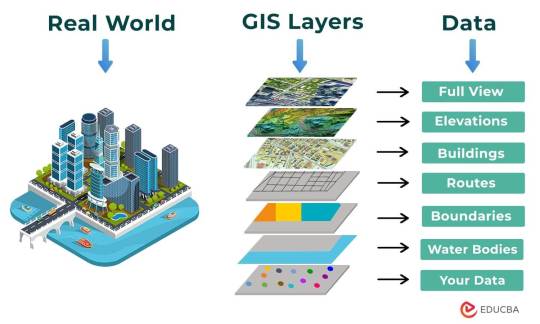
The following points elucidate the notable involvement of GIS in our daily lives:
Navigation and Location Services: GIS provides monitoring functions through the visual display of spatial data and precise geographical positioning of monitored vehicles, whereas GPS provides accurate, clear, and precise information on the position and navigation of a monitored or tracked vehicle in real-time and at the exact location.GIS is at the core of navigation applications and location-based services on smartphones. It enables accurate mapping, real-time navigation, and geolocation services, assisting individuals in finding locations, planning routes, and navigating unfamiliar areas.
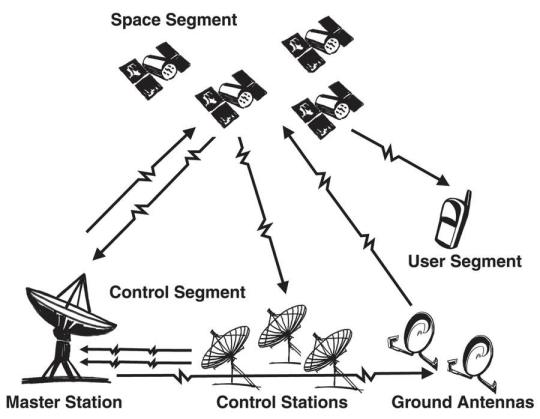
E-Commerce and Delivery Services: GIS software is a powerful tool for supply chain network planning. It helps determine the optimal location for distribution centers, warehouses, or other supply facilities. GIS is utilized in logistics and delivery services for optimizing routes, tracking shipments, and ensuring timely deliveries. E-commerce platforms leverage GIS to enhance the efficiency of their supply chain and last-mile delivery processes.
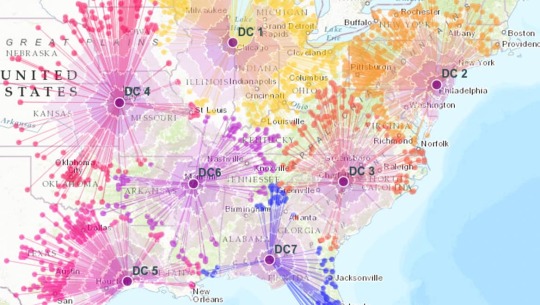
Weather Forecasting and Disaster Management: Many states are using GIS dashboard to monitor the rainfall across the state, on a real-time basis, from the data shared by rain sensors installed at various locationsGIS plays a crucial role in weather forecasting and disaster management. It assists meteorologists in analyzing spatial data, predicting weather patterns, and facilitating timely responses to natural disasters by mapping affected areas and coordinating emergency services.
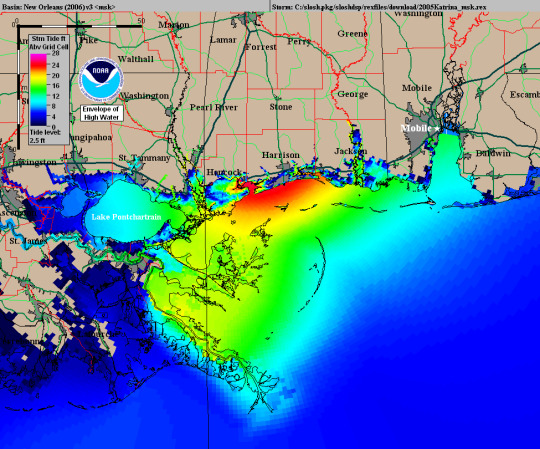
Healthcare Planning and Disease Monitoring: Geographic Information Systems enable the visualization and monitoring of infectious diseases. Additionally GIS records and displays the necessary information that health care needs of the community as well as the available resources and materials. GIS supports public health initiatives by mapping the spread of diseases, analyzing healthcare resource distribution, and assisting in the planning of vaccination campaigns. It aids in identifying high-risk areas and optimizing healthcare service delivery.
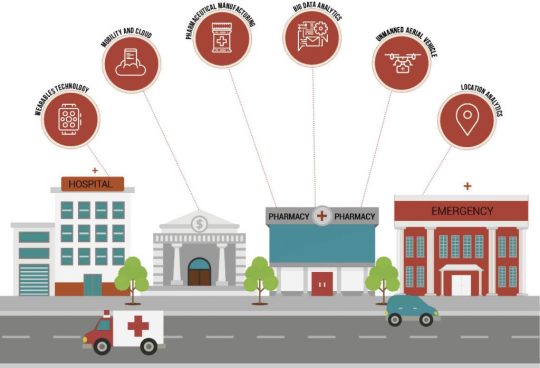
Social Media and Geo-tagging: GIS also helps in geotagging and other location related information in posts, it’s tools can map and visualize the spatial distribution of social media activity. This analysis can reveal trends, hotspots, and patterns in user engagement across different geographic areas. Many social media platforms incorporate GIS for geo-tagging, allowing users to share their location and experiences. This feature enhances social connectivity and facilitates the sharing of location-specific information.
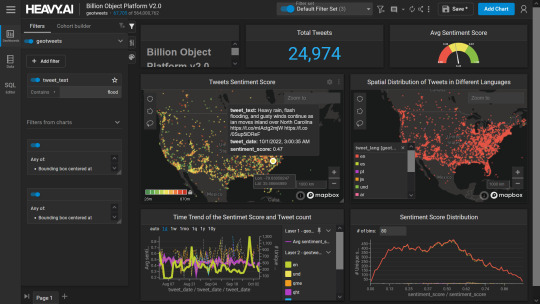
Smart City Initiatives: The Geographic Information System (GIS) offers advanced and user-friendly capabilities for Smart City projects and allows to capture, store and manipulate, analyze and visualize spatially referenced data. It is used for spatial analysis and modeling. It is the cornerstone of smart city planning, enabling the integration of data for efficient urban management. It supports initiatives related to traffic management, waste disposal, energy consumption, and overall infrastructure development.
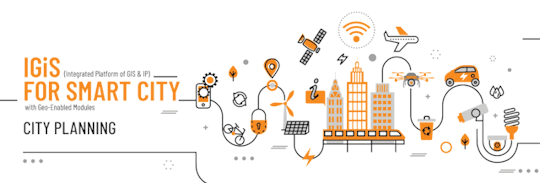
Education and Research: GIS is increasingly utilized in education and research for visualizing and analyzing spatial data. It enables students and researchers to explore geographic relationships, conduct field studies, and enhance their understanding of various subjects.

Agricultural Management and Precision Farming: Farmers leverage GIS to optimize agricultural practices by analyzing soil conditions, crop health, and weather patterns. Precision farming techniques, facilitated by GIS, contribute to increased crop yields and sustainable farming practices.
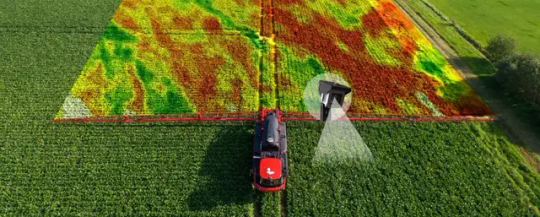
Real Estate and Property Management: In the real estate sector, GIS aids in property mapping, land valuation, and site selection. It provides real estate professionals with valuable insights into spatial relationships, market trends, and optimal development opportunities.
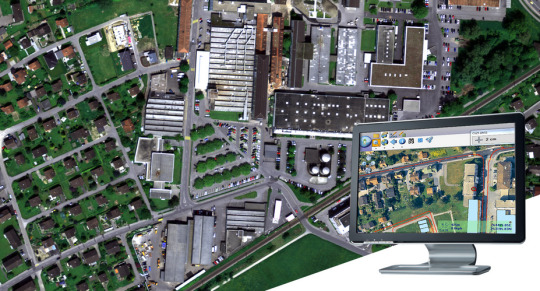
Tourism and Recreation: GIS enhances the tourism industry by providing interactive maps, route planning, and location-based information. It assists tourists in exploring destinations, finding attractions, and navigating efficiently.
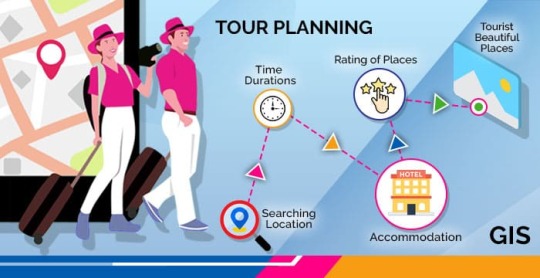
The broad and varied involvement of GIS in our daily lives underscores its significance as a technology that not only facilitates geographic data analysis but also contributes to the efficiency, safety, and interconnectedness of modern society. As GIS applications continue to evolve, their impact on daily activities is expected to further expand and refine.
#gis#architectdesign#architecture#city#education#geographic information system(gis)#geographical indication
13 notes
·
View notes
Text
Valkey 7.2 On Memorystore: Open-Source Key-Value Service
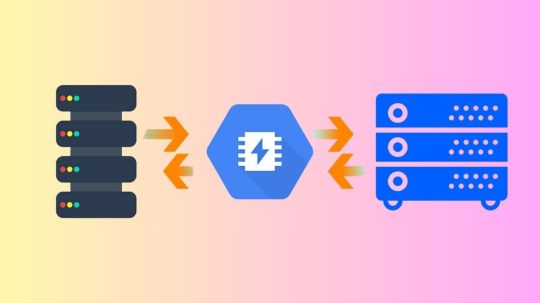
The 100% open-source key-value service Memorystore for Valkey is launched by Google Cloud.
In order to give users a high-performance, genuinely open-source key-value service, the Memorystore team is happy to announce the preview launch of Valkey 7.2 support for Memorystore.
Memorystore for Valkey
A completely managed Valkey Cluster service for Google Cloud is called Memorystore for Valkey. By utilizing the highly scalable, reliable, and secure Valkey service, Google Cloud applications may achieve exceptional performance without having to worry about handling intricate Valkey deployments.
In order to guarantee high availability, Memorystore for Valkey distributes (or “shards”) your data among the primary nodes and duplicates it among the optional replica nodes. Because Valkey performance is greater on many smaller nodes rather than fewer bigger nodes, the horizontally scalable architecture outperforms the vertically scalable architecture in terms of performance.
Memorystore for Valkey is a game-changer for enterprises looking for high-performance data management solutions reliant on 100% open source software. It was added to the Memorystore portfolio in response to customer demand, along with Memorystore for Redis Cluster and Memorystore for Redis. From the console or gcloud, users can now quickly and simply construct a fully-managed Valkey Cluster, which they can then scale up or down to suit the demands of their workloads.
Thanks to its outstanding performance, scalability, and flexibility, Valkey has quickly gained popularity as an open-source key-value datastore. Valkey 7.2 provides Google Cloud users with a genuinely open source solution via the Linux Foundation. It is fully compatible with Redis 7.2 and the most widely used Redis clients, including Jedis, redis-py, node-redis, and go-redis.
Valkey is already being used by customers to replace their key-value software, and it is being used for common use cases such as caching, session management, real-time analytics, and many more.
Customers may enjoy a nearly comparable (and code-compatible) Valkey Cluster experience with Memorystore for Valkey, which launches with all the GA capabilities of Memorystore for Redis Cluster. Similar to Memorystore for Redis Cluster, Memorystore for Valkey provides RDB and AOF persistence, zero-downtime scaling in and out, single- or multi-zone clusters, instantaneous integrations with Google Cloud, extremely low and dependable performance, and much more. Instances up to 14.5 TB are also available.
Memorystore for Valkey, Memorystore for Redis Cluster, and Memorystore for Redis have an exciting roadmap of features and capabilities.
The momentum of Valkey
Just days after Redis Inc. withdrew the Redis open-source license, the open-source community launched Valkey in collaboration with the Linux Foundation in March 2024 (1, 2, 3). Since then, they have had the pleasure of working with developers and businesses worldwide to propel Valkey into the forefront of key-value data stores and establish it as a premier open source software (OSS) project. Google Cloud is excited to participate in this community launch with partners and industry experts like Snap, Ericsson, AWS, Verizon, Alibaba Cloud, Aiven, Chainguard, Heroku, Huawei, Oracle, Percona, Ampere, AlmaLinux OS Foundation, DigitalOcean, Broadcom, Memurai, Instaclustr from NetApp, and numerous others. They fervently support open source software.
The Valkey community has grown into a thriving group committed to developing Valkey the greatest open source key-value service available thanks to the support of thousands of enthusiastic developers and the former core OSS Redis maintainers who were not hired by Redis Inc.
With more than 100 million unique active users each month, Mercado Libre is the biggest finance, logistics, and e-commerce company in Latin America. Diego Delgado discusses Valkey with Mercado Libre as a Software Senior Expert:
At Mercado Libre, Google Cloud need to handle billions of requests per minute with minimal latency, which makes caching solutions essential. Google Cloud especially thrilled about the cutting-edge possibilities that Valkey offers. They have excited to investigate its fresh features and add to this open-source endeavor.”
The finest is still to come
By releasing Memorystore for Valkey 7.2, Memorystore offers more than only Redis Cluster, Redis, and Memcached. And Google Cloud is even more eager about Valkey 8.0’s revolutionary features. Major improvements in five important areas performance, reliability, replication, observability, and efficiency were introduced by the community in the first release candidate of Valkey 8.0. With a single click or command, users will be able to accept Valkey 7.2 and later upgrade to Valkey 8.0. Additionally, Valkey 8.0 is compatible with Redis 7.2, exactly like Valkey 7.2 was, guaranteeing a seamless transition for users.
The performance improvements in Valkey 8.0 are possibly the most intriguing ones. Asynchronous I/O threading allows commands to be processed in parallel, which can lead to multi-core nodes working at a rate that is more than twice as fast as Redis 7.2. From a reliability perspective, a number of improvements provided by Google, such as replicating slot migration states, guaranteeing automatic failover for empty shards, and ensuring slot state recovery is handled, significantly increase the dependability of Cluster scaling operations. The anticipation for Valkey 8.0 is already fueling the demand for Valkey 7.2 on Memorystore, with a plethora of further advancements across several dimensions (release notes).
Similar to how Redis previously expanded capability through modules with restricted licensing, the community is also speeding up the development of Valkey’s capabilities through open-source additions that complement and extend Valkey’s functionality. The capabilities covered by recently published RFCs (“Request for Comments”) include vector search for extremely high performance vector similarly search, JSON for native JSON support, and BloomFilters for high performance and space-efficient probabilistic filters.
Former vice president of Gartner and principal analyst of SanjMo Sanjeev Mohan offers his viewpoint:
The advancement of community-led initiatives to offer feature-rich, open-source database substitutes depends on Valkey. Another illustration of Google’s commitment to offering really open and accessible solutions for customers is the introduction of Valkey support in Memorystore. In addition to helping developers looking for flexibility, their contributions to Valkey also support the larger open-source ecosystem.
It seems obvious that Valkey is going to be a game-changer in the high-performance data management area with all of the innovation in Valkey 8.0, as well as the open-source improvements like vector search and JSON, and for client libraries.
Valkey is the secret to an OSS future
Take a look at Memorystore for Valkey right now, and use the UI console or a straightforward gcloud command to establish your first cluster. Benefit from OSS Redis compatibility to simply port over your apps and scale in or out without any downtime.
Read more on govindhtech.com
#Valkey72#Memorystore#OpenSourceKey#stillcome#GoogleCloud#MemorystoreforRedisCluster#opensource#Valkey80#vectorsearch#OSSfuture#momentum#technology#technews#news#govindhtech
2 notes
·
View notes
Text
A Comprehensive Guide to Blockchain-as-a-Service (BaaS) for Businesses
In today's digital landscape, a blockchain app development company plays a crucial role in transforming industries with decentralisation, immutability, and transparency. However, building and managing a private blockchain network can be complex and costly, which deters many businesses. Blockchain-as-a-Service (BaaS) simplifies this by allowing businesses to leverage blockchain without the challenges of infrastructure development.
This comprehensive blog covers the hurdles businesses face when adopting blockchain, how BaaS can bridge these gaps, and why it is a game-changer for various sectors.
I. Challenges for Businesses in Blockchain Adoption
Despite the undeniable potential of blockchain technology, businesses face several significant challenges when contemplating its adoption:
Limited Internal Expertise: Developing and maintaining a private blockchain network requires a skilled team with deep blockchain knowledge, which is often lacking in many organisations.
High Cost: The infrastructure investment and ongoing maintenance fees associated with blockchain can strain budgets, especially for small and medium-sized businesses (SMBs).
Integration Complexities: Integrating a blockchain network with existing enterprise systems can be challenging, requiring seamless data flow and compatibility between the blockchain system and legacy infrastructure.
II. Understanding BaaS and Its Operational Fundamentals
Blockchain-as-a-Service (BaaS) simplifies the development and deployment of blockchain applications by providing a cloud-based platform managed by third-party providers. The BaaS market, valued at $1.5 billion in 2024, is projected to grow to $3.37 billion by 2029, reflecting a robust 17.5% CAGR.
Key Components of BaaS
Cloud-Based Infrastructure: Ready-to-use blockchain infrastructure hosted in the cloud, eliminating the need for businesses to set up and maintain their networks.
Development Tools and APIs: Access to a suite of tools and APIs to create and deploy blockchain applications quickly.
Platform Support: Compatibility with various blockchain protocols such as Ethereum, Hyperledger Fabric, and Corda, offering flexibility to businesses.
Managed Service Model: Providers handle tasks like network maintenance, security updates, and scalability.
Pay-as-you-go Pricing Model: Reduces upfront investment and operational costs associated with blockchain software development.
III. Business Benefits of Blockchain as a Service
Adopting BaaS offers numerous advantages, including:
Enhanced Scalability: Businesses can easily scale their blockchain network as their needs grow.
Increased Efficiency: Eliminates intermediaries and streamlines transactions, improving productivity.
Enhanced Transparency: Tamper-proof records of transactions foster trust and improve auditability.
Reduced Costs: The pay-as-you-go model eliminates large upfront investments.
Improved Security: Built on secure cloud infrastructure with robust encryption protocols.
Enhanced Customer Engagement: Facilitates secure and transparent interactions with customers, building trust and loyalty.
IV. Industry-wise Key Use Cases of Blockchain as a Service
BaaS is transforming business operations across various industries:
Finance: Streamlines trade finance, secures cross-border payments, and enhances KYC and AML compliance.
Supply Chain Management: Improves transparency and traceability of goods, automates logistics processes, and reduces counterfeiting risks.
Healthcare: Facilitates secure sharing of patient data and tracks the provenance of pharmaceuticals.
Government: Enhances transparency with secure citizen identity management and verifiable voting systems.
V. Region-wise Adoption of BaaS
The BaaS market is experiencing rapid growth worldwide:
North America: Leading with over 35% of global revenues, driven by early adoption.
Europe: Countries like Germany, the UK, and France are at the forefront.
Asia-Pacific: China, India, Japan, and South Korea are key contributors.
Rest of the World: Growing adoption in South & Central America, the Middle East, and Africa.
VI. Why Choose a Prominent BaaS Provider?
Opting for a blockchain app development company that offers BaaS can significantly impact the success of your blockchain initiatives:
Specialised Expertise: Providers possess in-depth knowledge and experience in blockchain technology.
Cost Efficiency: Eliminates the need for in-house infrastructure investment and maintenance.
Time Savings: Accelerates the development process and reduces time-to-market.
Scalability and Flexibility: Offers scalable solutions that can adapt to business growth.
Risk Mitigation: Providers handle security, maintenance, and updates.
Conclusion
By adopting Blockchain-as-a-Service (BaaS), businesses can simplify blockchain integration and focus on innovation without the complexities of managing infrastructure. Systango, a leading blockchain app development company, offers tailored BaaS solutions that help businesses leverage blockchain technology for enhanced efficiency, scalability, and security. As one of the top , Systango also excels in integrating AI solutions to drive business growth and efficiency.
Original Source - https://systango.medium.com/a-comprehensive-guide-to-blockchain-as-a-service-baas-for-businesses-5c621cf0fd2f
2 notes
·
View notes
Text
Thailand Board of Investment
The Thailand Board of Investment (BOI), established in 1966, serves as a vital gateway for foreign businesses seeking to invest and establish a foothold in the Southeast Asian nation. Acting as a one-stop shop, the BOI offers a range of incentives and support mechanisms to make Thailand an attractive and competitive investment destination.
Who Benefits from the BOI?
The BOI's programs target a broad spectrum of foreign investors, including:
Manufacturers: Companies engaged in the production of goods, particularly those aligned with Thailand's focus industries (like automotive, electronics, and food processing).
Technology Companies: Businesses involved in areas like software development, biotechnology, and digital innovation are highly encouraged.
Service Providers: The BOI welcomes foreign companies offering services in sectors like healthcare, tourism, and logistics.
What Incentives Does the BOI Offer?
The BOI provides a compelling package of incentives to attract foreign investment. These benefits can include:
Corporate Income Tax Exemptions: Partial or complete exemption from corporate income tax for a set period.
Import Duty Exemptions: Reduced or waived import duties on machinery, raw materials, and technology crucial for business operations.
Tax Breaks on Investment Costs: Incentives to encourage investment in research and development, infrastructure development, and employee training.
Simplified Business Registration: The BOI streamlines the business registration process for promoted companies.
Work Permit Facilitation: Assistance in obtaining work permits for foreign skilled workers needed for the project.
Focus Industries and Thailand's Development Goals
The BOI's promotional programs strategically align with Thailand's national development goals. By prioritizing industries like advanced manufacturing, digital technology, and environmentally friendly practices, the BOI aims to:
Drive Economic Growth: Attract foreign investment that fosters job creation and boosts Thailand's export capabilities.
Enhance Technological Advancement: Encourage technology transfer and innovation to elevate Thailand's industrial competitiveness.
Promote Sustainable Development: Support businesses that implement environmentally responsible practices and contribute to a greener future for Thailand.
How to Apply for BOI Promotion
Foreign businesses can apply for BOI promotion by submitting a detailed proposal outlining their investment project, including the nature of the business, target market, and projected economic benefits to Thailand. The BOI provides clear guidelines and application procedures on their website https://www.boi.go.th/en/index/.
Investing in Thailand's Future
The Thailand Board of Investment presents a compelling proposition for foreign businesses seeking to expand their reach in Southeast Asia. With its attractive incentives, strategic focus, and commitment to development, the BOI paves the way for a successful and mutually beneficial partnership between foreign investors and Thailand's growing economy.
2 notes
·
View notes
Text
The Evolution and Impact of ERP Software in the UAE: A Comprehensive Analysis
ERP stands for Enterprise Resource Planning. It is a type of software system that integrates and manages core business processes and functions within an organization. ERP software typically provides a centralized database and a suite of applications that automate and streamline business activities across various departments such as finance, human resources, supply chain management, manufacturing, sales, and customer service.
In the fast-paced landscape of business operations, efficient management of resources and information is critical for success. Enterprises in the United Arab Emirates (UAE) have witnessed a remarkable transformation in their operational efficiency and competitiveness through the adoption of Enterprise Resource Planning (ERP) software. This article delves into the evolution, benefits, challenges, and future trends of ERP software within the UAE context.
In recent decades, Enterprise Resource Planning (ERP) software has played a transformative role in how businesses in the United Arab Emirates (UAE) operate and manage their resources. This article delves into the evolution, adoption, and impact of ERP systems within the UAE's business landscape. By exploring the unique challenges and opportunities presented by the UAE's dynamic economy, we can better understand how ERP software has become an indispensable tool for organizations seeking efficiency, integration, and scalability.
Evolution of ERP Software
The adoption of ERP software in the UAE mirrors global trends but is uniquely shaped by regional business requirements and technological advancements. In the early 2000s, ERP systems gained traction among larger corporations seeking to streamline their complex processes. Major multinational ERP providers like SAP, Oracle, and Microsoft Dynamics established a strong presence in the region, catering to diverse industry needs including finance, manufacturing, retail, and logistics.
A notable development in recent times is the movement towards cloud-centric ERP solutions.This transition offers scalability, flexibility, and cost-effectiveness, allowing businesses in the UAE to manage their operations more efficiently. Local ERP vendors have also emerged, offering tailored solutions that cater specifically to the nuances of the UAE market, such as compliance with local regulations and cultural practices.
Challenges and Obstacles
Despite the numerous benefits, ERP implementation in the UAE is not devoid of challenges. One prominent obstacle is the high initial investment required for ERP deployment, including software licensing, customization, and training costs. For smaller businesses, this financial commitment can be prohibitive, leading to slower adoption rates among SMEs.
Cultural factors and change management also pose challenges. Embracing new technology often requires a shift in organizational culture and employee mindsets. Resistance to change, coupled with the need for extensive training, can hinder the successful implementation of ERP systems in the UAE.
Furthermore, data security and privacy concerns are paramount, especially in light of stringent regulatory frameworks such as the UAE's Data Protection Law. Ensuring compliance with local data protection regulations adds complexity to ERP deployment, necessitating robust cybersecurity measures and data governance protocols.
The Business Landscape of the UAE
The UAE is renowned for its vibrant economy, diversified industries, and strategic geographical location. Over the years, the country has emerged as a global business hub attracting multinational corporations, SMEs, and startups alike. Key sectors such as finance, real estate, construction, logistics, tourism, and manufacturing contribute significantly to the nation's GDP. However, this diversification has also brought complexities in managing business operations efficiently.
The Emergence of ERP Solutions
As businesses in the UAE expanded and diversified, traditional methods of managing operations became inadequate. The need for integrated systems that could streamline processes across departments led to the rise of ERP solutions. Initially developed to manage manufacturing processes, ERP systems evolved to encompass finance, human resources, supply chain, customer relationship management, and more. This evolution mirrored the growth and diversification of UAE businesses.
Factors Driving ERP Adoption
Several factors have fueled the adoption of ERP software among businesses in the UAE:
Global Competition: The UAE's aspiration to compete on a global scale necessitated advanced operational efficiencies that ERP systems could deliver.
Regulatory Compliance: The UAE's regulatory environment, including VAT implementation, required robust financial and reporting capabilities that ERP systems could provide.
Scalability: With rapid economic growth, businesses needed scalable solutions to manage increasing complexities.
Integration Needs: As businesses diversified, the need for seamless integration across functions became crucial.
Challenges in ERP Implementation
While the benefits of ERP systems are substantial, implementing them poses challenges:
Cultural Factors: Embracing technological change and adopting new systems can face resistance due to cultural factors.
Resource Constraints: SMEs may struggle with the limited resources required for ERP implementation and customization.
Data Security and Privacy: The UAE's focus on data security and privacy necessitates robust ERP solutions compliant with local regulations.
Impact of ERP on UAE Businesses
The impact of ERP software on businesses in the UAE has been profound:
Improved Efficiency: Streamlined processes lead to increased productivity and reduced operational costs.
Enhanced Decision Making: Real-time data availability empowers businesses to make informed decisions.
Better Customer Experience: Integrated systems ensure seamless customer interactions and improved service delivery.
Regulatory Compliance: ERP systems aid in meeting regulatory requirements efficiently.
Key ERP Players in the UAE
Several global and regional ERP providers cater to the UAE market, offering tailored solutions to meet local business needs. Major players include SAP, Oracle, Microsoft Dynamics, Sage, and Epicor, among others.
Future Trends and Innovations
Looking ahead, several trends are poised to shape the future of ERP software in the UAE. Artificial Intelligence (AI) and Machine Learning (ML) are increasingly integrated into ERP systems, enabling predictive analytics and automation of routine tasks. This enhances decision-making capabilities and further optimizes business processes.
Mobile ERP applications are also gaining popularity, allowing stakeholders to access critical business data on the go. The rise of Industry 4.0 and the Internet of Things (IoT) is driving demand for ERP solutions that can seamlessly integrate with smart devices and sensors, enabling real-time monitoring and control of operations.
Moreover, the convergence of ERP with other technologies like blockchain promises enhanced transparency and security in supply chain management, crucial for industries like healthcare and finance.
Conclusion
In conclusion, ERP software has become an integral component of the UAE's business ecosystem, driving efficiency, integration, and growth across diverse sectors. While challenges exist, the transformative impact of ERP systems on businesses in the UAE underscores their importance in navigating complex operational landscapes. As technology continues to evolve, so too will the role of ERP in shaping the future of business in the UAE.ERP software has emerged as a transformative tool for businesses in the UAE, driving efficiency, innovation, and competitiveness across industries. Despite challenges such as high costs and cultural adaptation, the benefits of ERP implementation are substantial, ranging from streamlined operations to improved customer satisfaction. Looking ahead, the evolution of ERP software in the UAE is poised to align with global technological advancements, incorporating AI, IoT, and blockchain to unlock new possibilities for business growth and development. As enterprises continue to navigate the digital landscape, ERP remains a cornerstone of strategic management, enabling organizations to thrive in an increasingly complex and dynamic marketplace.
In summary, ERP software has been a game-changer for businesses in the UAE, enabling them to streamline operations, enhance decision-making, and adapt to a rapidly evolving marketplace. As the UAE continues to position itself as a global economic powerhouse, the role of ERP systems will remain pivotal in supporting the growth and sustainability of businesses across various sectors.
2 notes
·
View notes